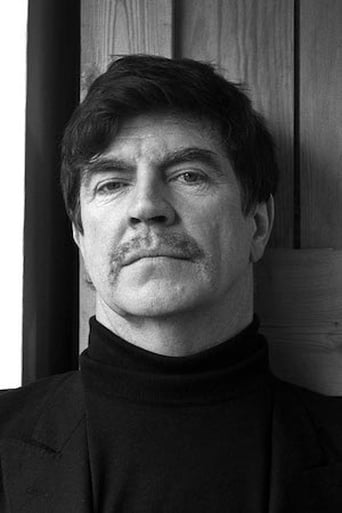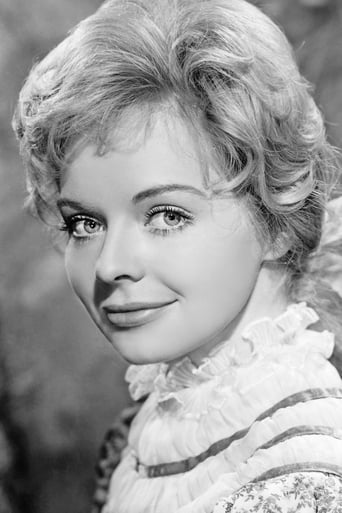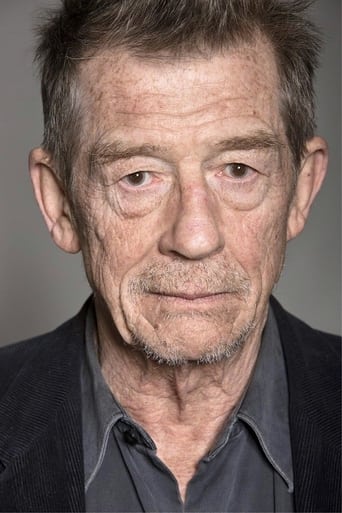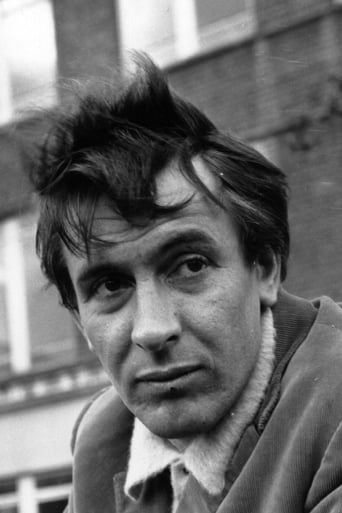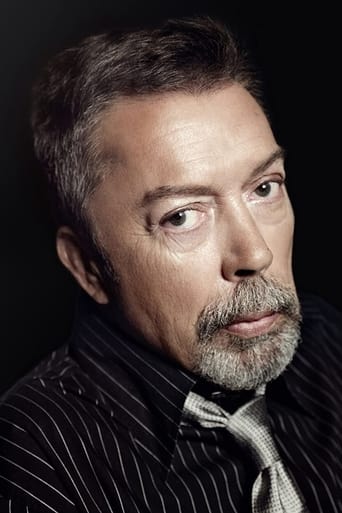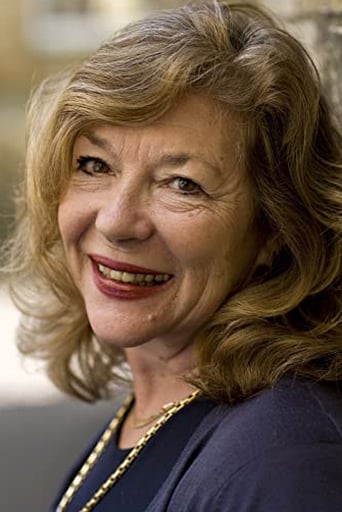Ghoulumbe
Better than most people think
Rosie Searle
It's the kind of movie you'll want to see a second time with someone who hasn't seen it yet, to remember what it was like to watch it for the first time.
Hattie
I didn’t really have many expectations going into the movie (good or bad), but I actually really enjoyed it. I really liked the characters and the banter between them.
Philippa
All of these films share one commonality, that being a kind of emotional center that humanizes a cast of monsters.
FilmCriticLalitRao
The importance of sound is known to all human societies. Sometimes it acts as an element of nuisance but there are hardly any people who would imagine it to have the tremendous potential to kill. This conundrum has been depicted in a British film called "The Shout" which has also been hailed by most media groups as a horror film. This is not entirely true as it has some good moments of fright but without usual blood and gore stuff. This is a special feature with which one is able to associate most horrors films. Polish director Jerzy Skolimowski makes effective use of the quiet life in a small English village to direct an intriguing tale of a mysterious man's ability to wreak havoc on others as he possesses the unique ability to destroy things merely by uttering a loud cry. In the film, the destruction caused works on two different levels. On the one hand there is a stranger who gains entry into a normal household through trickery. This action has fatal consequences for the inhabitants of the house. On the other hand, a different kind of insidious destruction is caused by an insider who decides to ignore her partner in order to team up with a wicked man. Watching this film, viewers would find it rather strange to digest that the fury of sound has been used by an evil character to subdue another person who is none another than a sound engineer. Before the making of this film no other motion picture had dared to describe in detail the deadly possibilities of sound to create destruction. This is an element which gives "The Shout" a certain level of advantage over other horror films.
chaos-rampant
The Shout is the kind of 70's horror film I love, where the grip on reality is tenuous at best, where things may or may not be what we see them to be and life as we know it is broken by something that may or may not be of this world, the normal and the everyday become concave and something dark and ominous can be faintly discerned at the bottom, and conclusions are not governed by logic and finality but rather erupt in wild emotion, guilt or pain or insanity, emotion masked/transfigured using supernatural terms. In some ways the notes Skolimowski uses to tell his story are the same as those used in Don't Look Now and The Last Wave, the basic means of expression are aesthetic, some of it even strike the same chords and capture the same atonal melody as those films, but in the end it's not quite the same tune.This is a story recounted to a third party during a baseball match in a mental institution, "always the same story" as the teller says, the sequence of events is not always in the same order, and we can only guess at how many times Crossley has said his story, how much of it is real or not and if any of it actually happened as we see. The flashback story where Alan Bates shows up in John Hurt's home to threaten his grip on sanity and his marriage is pretty straightforward though, it's like a fable about cuckolding come to pass with supernatural means.Susannah York is perfect for this type of film, she has the right measure of youthful and gauche that makes her distraught heroines seem so natural (like they do in Images and Freud), and she shines again here, although now it's John Hurt's turn to be confounded by the shattered reality around him and put the pieces back together.The scenes where he tries to pretend that everything is fine when he knows it's not, with that fragile forced smile and his fleeting movements, resonate with me in very immediate ways, his eyes always tell the truth though, and there's a scene right after he witnesses "the shout" for the first time where he's lying in bed visibly shaken and we hear Alan Bates going up the stairs coming to his room and his body tenses and clenches in anticipation. He doesn't want to be in the same room with that man but he must pretend everything is okay because he can't explain any of his terror to anyone, and he's even powerless to make him leave. Terrific acting by Hurt, I like him more every time.That we go back to the mental institution to realize we've been listening to an unreliable narrator takes out some of my enjoyment of the film, because things have just got interesting and they could be pushed much further, before a curious voodoo involving a round rock and shoes can take place and the police make their appearance, and because it's a device used in a plethora of films dating as far back as The Cabinet of Dr. Caligari and Skolimowski is obviously not trying to make one of that plethora of films. In other words, whereas Don't Look Now takes time to blur the line between right and wrong, real and imagined, The Shout goes back and erases the line so that none of what we saw may have actually been real so that nothing really matters. It's like a game where the stakes are removed at the last minute.The last minute is amazing though, whatever it's supposed to mean, it's wild and chaotic, thunders strike, people flail naked in the rain, and someone's jaws are clenched in agony.It's still very good stuff, anxiety and uncertainty always work better for me than literal horror, and The Shout for the most part is like a strange painted round object someone has brought back from an exotic place, I like to take it in my hand and look at it from different angles and make up stories about it, but it loses some of that mysterious charm when I find out that it's nothing more than a painted round rock. It still could have been used for anything by the one who made it but that unspoken meaningfulness of it has evaporated a little.
VideoKidVsTheVoid
An utterly bewitching and fantastical film from the great Polish-born filmmaker Jerzy Skolimoski. An "abnormal" mental patient, Crossley (Alan Bates), tells a story of himself, which may or may not be true, to a young, confused looking Tim Curry during a mental institution run cricket match. He tells of how he self-imposed his way into the home of an experimental musique concrète composer, Anthony (John Hurt), who records all sorts of fascinating sounds and noises and then manipulates them with his mini-studio of electronic equipment, and his wife Rachel (Susannah York). Inside the flashback/flash forward/flash sideways, he tells them of a unique ability he has perfected, which he learned from an aboriginal medicine man while living in the Australian outback. It seems he can perform a shout that will kill anyone within a surrounding radius. He demonstrates "The Shout" to Anthony and unknowingly kills a local farmer. His presence in Anthony's home quickly becomes awkward and unwanted but he continues to force his stay with intimidation. He uses his mysterious mystical abilities to entrance Rachel into becoming almost rabid for him, and taunts Anthony with his conquest and powers. Anthony, humiliated and overpowered in his own home and life, searches desperately for a way to defeat Crossley; searches for the source of his "soul".Skolimowski uses the music and sounds that are recorded by John Hurt's character on screen (in real life made by Rupert Hine) as the metaphysical soul to this cinematic nightmare; similar in the ways David Lynch uses sound design as both an audio and visually integral mood stabilizing component in his nightmare-dream poems, or how Nicolas Roeg uses fractured time and images to a disorientating, hypnotic effect. In fact, it feels very analogous to a Roeg film. Highly recommended.
FieCrier
I don't recall now how I'd heard of this movie, but having heard of it, I was motivated enough to get a copy from the Amazon UK site (region-free players are a must; region encoding should be abolished!).From the very start of the movie, it's clear it will be unusual. First we see a woman drive up to a building. She is ushered into a room where there are three dead men, apparently naked, laid out under white sheets on what seem to be dining tables. She stops at the third one. Then, we see an black, likely aboriginal, man wandering in a desert or among sand dunes, and he approaches with a sharp bone. Then a man (Tim Curry) arrives at an asylum, where he is assigned the job of score-keeping for a game of cricket the patients and staff are about to begin. The other scorekeeper, one of the patients, starts to tell him a story....That's a lot of jumping around just to start the film! There are layers in the film, due to the storytelling, and not everything is chronological, and perhaps not everything is even true.The story involves the man telling the story (Alan Bates) and one of the men playing cricket (John Hurt). John Hurt's character plays organ at a church, when he gets there on time, anyway, and at home records a variety of sounds, amplifying them in such a way they sound unusual. He meets Alan Bates, a strange man who had learned some aboriginal magic when he lived in Australia, and Bates manages to enter Hurt's home and life.The story structure and the involvement of an asylum called to mind The Cabinet of Dr. Caligari for me, and now seeing the comments of others, I see I'm not alone. One other movie that came to mind while watching The Shout was Picnic at Hanging Rock (1975) because of the Australian weirdness and artiness in both films.I can't claim to understand everything in the film. For example, at one point a character wakes up and he's temporarily confused about his identity and profession, a problem that reoccurs at least once thereafter. Additionally, there's some digging in the sand for rocks which seem related to people somehow. In spite of this, or perhaps because of this to a degree (I like some mystery sometimes), I enjoyed the movie, and I'm glad I bought it.







